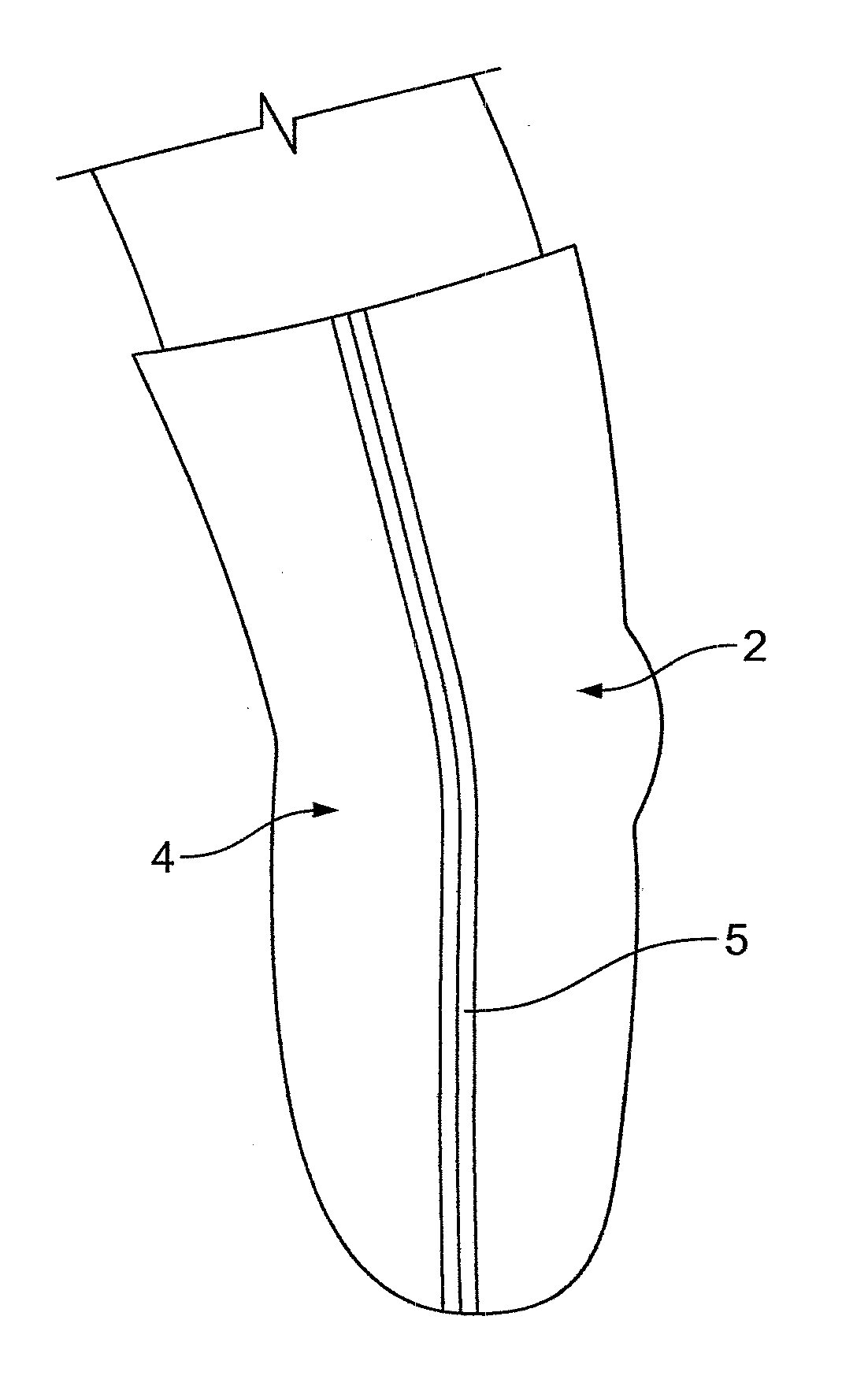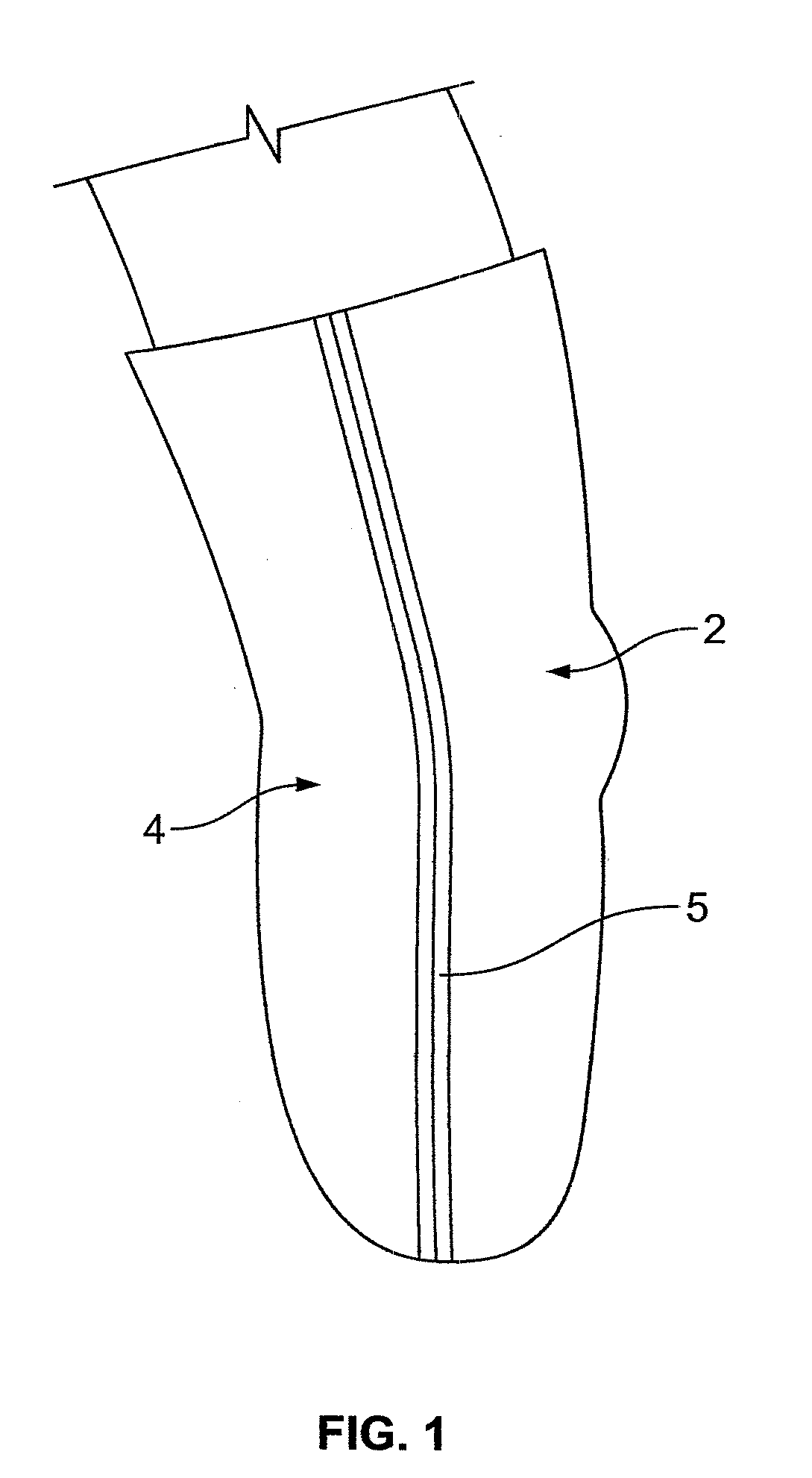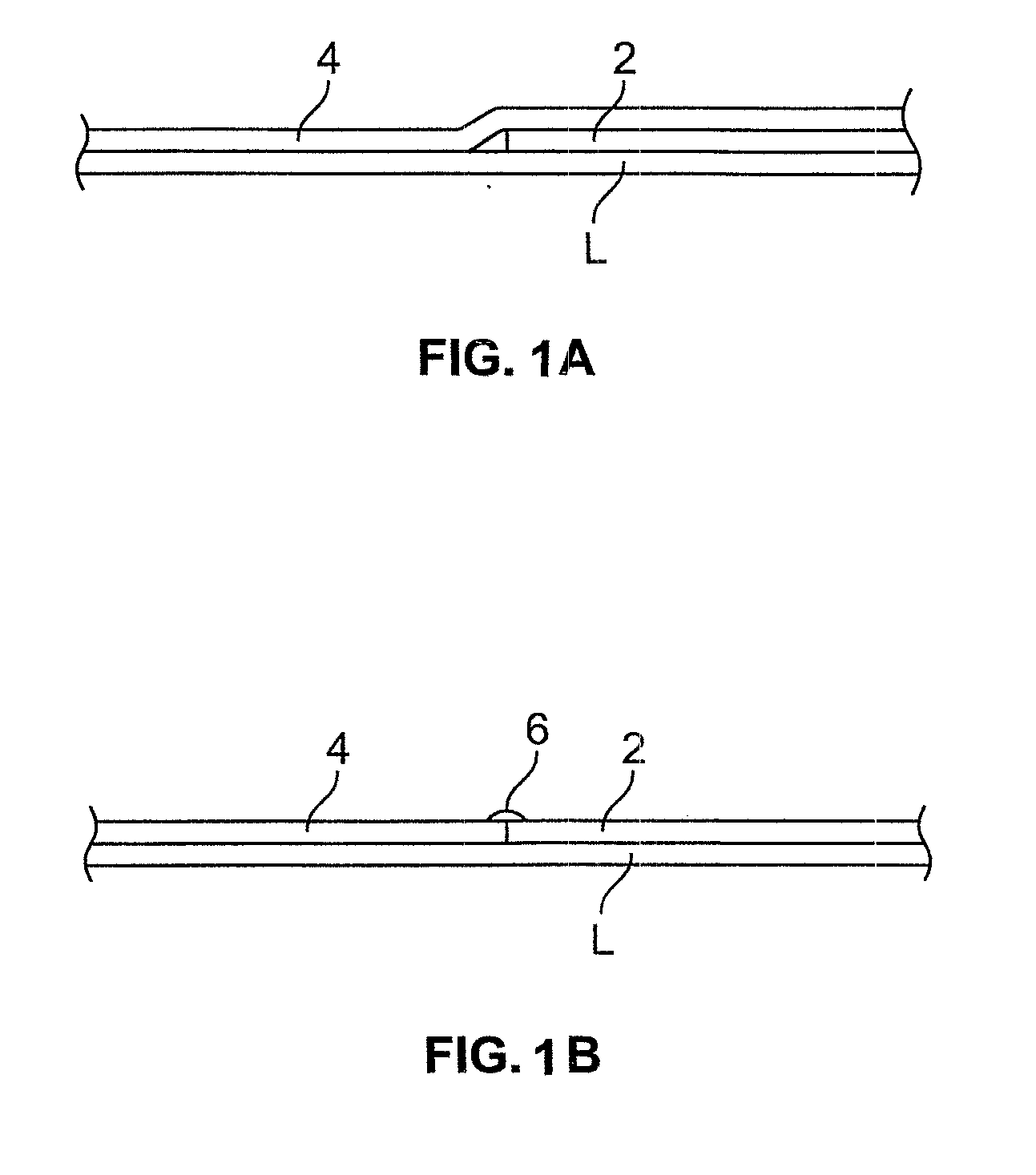Prosthetic liner with improved knee flexion
a technology of prosthetic liner and knee joint, applied in the field of prosthetic liner with improved knee flexion, can solve the problems of insufficient conformational adjustment of knee joint, relatively simple design of commonly available elastomeric liner, and inability to physically interface well with amputees, etc., and achieve the effect of reducing or eliminating
- Summary
- Abstract
- Description
- Claims
- Application Information
AI Technical Summary
Benefits of technology
Problems solved by technology
Method used
Image
Examples
second embodiment
[0040]Referring to FIG. 4, the present invention is illustrated. FIG. 4 shows the inventive concept applied to an elastomeric sleeve (L′) having anterior material (2) and posterior material (4) overlays do not extend to the stump end of the liner, and are laterally connected by a seam.
third embodiment
[0041]Referring to FIG. 5, the present invention is illustrated. FIG. 5 shows the inventive concept applied to an elastomeric sleeve (L) having anterior material (2) and posterior material (4) overlays do not extend to the stump end or to the open end of the liner, and are laterally connected by a seam.
PUM
 Login to View More
Login to View More Abstract
Description
Claims
Application Information
 Login to View More
Login to View More - R&D
- Intellectual Property
- Life Sciences
- Materials
- Tech Scout
- Unparalleled Data Quality
- Higher Quality Content
- 60% Fewer Hallucinations
Browse by: Latest US Patents, China's latest patents, Technical Efficacy Thesaurus, Application Domain, Technology Topic, Popular Technical Reports.
© 2025 PatSnap. All rights reserved.Legal|Privacy policy|Modern Slavery Act Transparency Statement|Sitemap|About US| Contact US: help@patsnap.com



